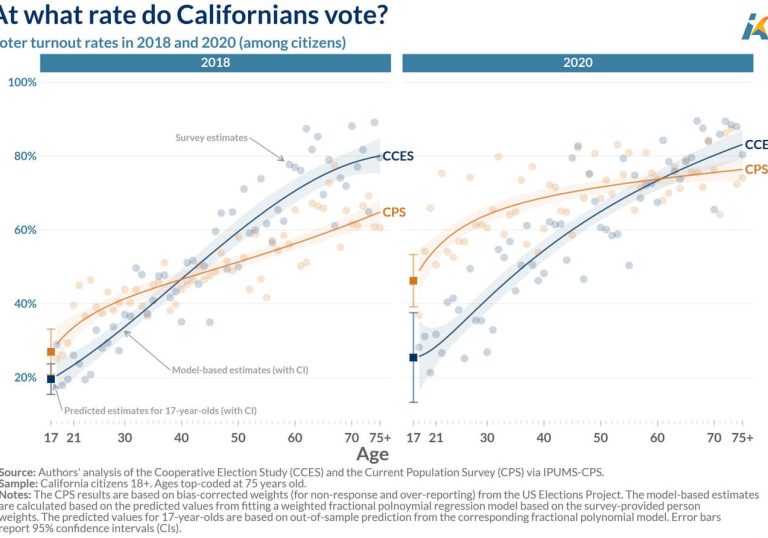This research was partially funded by California 100, a statewide initiative focused on inspiring a vision and strategy for California’s next century that is innovative, sustainable, and equitable.
About the Project
The Berkeley Institute for Young Americans is a research partner of the California 100 initiative, a project intended to strategize across 15 different issue areas to envision California’s future. In a recently published report, we took a holistic look at how California governs and funds its early care and education (ECE), K-12, and higher education systems, and to identify the strengths and shortcomings across the different sectors (note: members of Berkeley’s Graduate School of Education authored the report’s education technology section).
The issue brief series below synthesize information from the main report to provide readers with a succinct overview of how each sector is financed and governed. Separate issue briefs identify major trends that may influence the evolution of early childhood and K-16 education in the years to come, and also provide brief histories of school finance and education policy. These briefs–along with the main report–are intended to be conversation starters for stakeholders to consider what education might look like in California a century from now and what reforms, if any, may be necessary to steer the system towards a brighter future.
We encourage readers to ask: Is the existing educational ecosystem sufficient for the future of CA over the next 100 years? How should state lawmakers regulate and govern in the decades to come, if at all, across a growing and complex network of organizational arrangements, institutional structures, and rapid technology changes across the P-16 system? What role should the state play in defending and improving student equity, social mobility, and the democratic purposes of education? Are reforms to the state’s education finance system necessary? And what role, if any, is there for the private sector to provide services in early childhood education, K-12, and higher education?
Executive Summary
The Future of Education: A California 100 Report on Policies and Future Scenarios
Issue Brief Series – Education Finance
Evaluating Early Care and Education (ECE) Funding for California’s Future
Evaluating K-12 Education Funding for California’s Future
Evaluating Higher Education Funding for California’s Future
Evaluating the Stability of Funding in Early Care, K-12, and Higher Education
Trends in Education Finance
A Brief History of California’s Education Finance System
Issue Brief Series – Education Policy
California’s ECE & K-12 Education Policy Landscape
California’s Higher Education Policy Landscape
Trends in Education Policy
A Brief History of Modern Education Policy
Supporting materials
Overview of the Issue Brief Series
The modern American Dream rests on the idea that success in the education system is the doorway to equal opportunity and social mobility. However, that idea has been put into question in recent decades as researchers have found glaring inequities in academic achievement, college access and attainment, and life-long outcomes based on students’ socioeconomic backgrounds and race and ethnicity. Such trends are prevalent nationwide, but they are especially pronounced in California, a state that serves far more low-income and diverse students across the education sector than national averages.
California lawmakers, riding on a strong economy and multi-year budget surpluses, have made major headway in recent years to improve many facets of the state’s public education system to better serve students. Notably, lawmakers made financial investments in early childhood education by broadening access to Transitional Kindergarten for all 4- and 5-year-olds in the state. They created the Local Control Funding Formula, a landmark equity-based funding formula in K-12 that allocates additional resources to districts serving high-need students, and California has become one of the most generous states in the nation to provide financial aid to students enrolled in the state’s public higher education system. Aside from these funding efforts, state lawmakers have implemented policy strategies to tighten the alignment of the K-16 system by investing in K-12 programs to improve college readiness while also intervening in the inner-workings of the state’s community college system to eliminate remedial coursework and improve the transfer system to the CSUs and UCs.
Despite these efforts, serious structural challenges to the state’s finance and governance systems remain. In addition, new trends in the education sector brought on by the COVID-19 pandemic are stress-testing the public system’s current design. For example, while declining enrollment in K-12 was in motion years before the pandemic began, COVID-19 accelerated declines across early childhood, K-12, and the community college sector. Other cost pressures such as pensions, health care, facilities, or growing enrollment in special education, continue to build and could destabilize education budgets even when the state’s General Fund is flush. Teacher shortages in both early childhood and K-12 were already in motion before the pandemic began but have grown over the last two years, putting into question the quality of education many students will receive in the years to come.
Such challenges are also taking place amidst the backdrop of a transforming economy and labor market that will inevitably have profound, long-term effects on the design and function of the public education system. Automation, artificial intelligence, and other advanced technological changes are beginning to take root across a range of industries in the U.S. and internationally. Californians are faced with the challenge to think long-term about how to create a skilled workforce capable of adapting to this revolutionary transformation of the economy. Education stakeholders must consider whether the design of our current education system can prepare all students to be 21st century life-long learners that the new economy requires, or whether the system has become outdated.
Our review of the strengths and challenges of the state’s current education system suggests that the long-term survival of California’s public education system is not a guarantee. Alternative education models are beginning to take root across the state that could upend the traditional public option in the years and decades to come. For example, charter schools in K-12 continue to grow in California as parents become disillusioned with what traditional public schools have to offer. Online education and other advances in education technology–accelerated by the COVID-19 pandemic–have the potential to upend the entire P-16 system by doing away with traditional brick-and-mortar institutions and classroom practices and instead put in place virtual or distance learning spaces. And private platforms like Udemy and Coursera could put the future survival of California’s higher education institutions at risk with online coursework that allow end-users to enroll in single skills-gaining courses or earn industry certifications.
As the state sits at the crossroads of change, this issue brief series aims to lay the groundwork for thoughtful conversations among education stakeholders in the months and years to come about the future direction of education in the Golden State.










